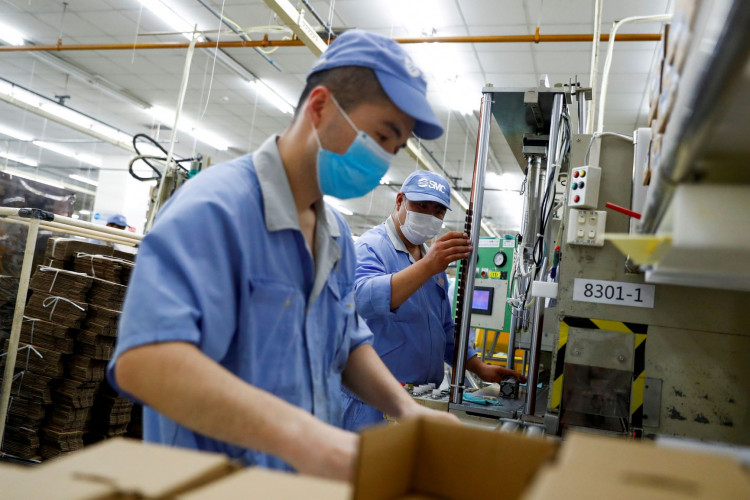A private survey published at the weekend found China's purchasing managers' index (PMI) has fallen to 51.5 in February, down from 52.0 in January but still in the realm of growth as producers eased from a Lunar New Year holiday manufacturing rush.
Caixin/Markit services monthly survey of factory owners' sentiment in China jibes with the National Bureau of Statistics' official findings released on Feb 28, which reported a drop in PMI from 51.3 in January to 50.6 in February.
"Despite both the official manufacturing PMI and Caixin's private gauge remain in expansionary territory, they extended declines for a second consecutive month in February," UBP senior economist Carlos Casanova said in an interview with Business Times.
As an indicator of business activity, a figure above 50 is a sign of expansion while anything less than 50 suggests a contraction from the month previous.
"Demand and supply in both the manufacturing and services sectors improved at a slower pace [in February]," Caixin economist Wang Zhe wrote in a report of the survey. "Overseas demand and domestic employment both shrank."
Rates of joblessness in the services industry increased after six consecutive months of steady reduction, according to Caixin, while the business activity index fell to its lowest point since April 2020.
DBS executive director and senior economist Nathan Chow attributed the slowdown to a "typical seasonal dip due to the Lunar New Year holiday" during which many manufacturers frontload their production beforehand, as well as a surge in social distancing restrictions.
"We saw a similar pattern with the services PMI, meaning that the declines were broad-based and not reflective of weakness in any particular sector," said Casanova.
This dip isn't suggestive of a change to the longer term trend of recovery in the Chinese economy.
"Activities will rebound in March as factories are back to production after the holiday and new cases of COVID continue to decline," Chow told Business Times.
"Beyond [the first quarter] we expect that manufacturing activity will pick up going forward on sustained external demand," said Casanova.
Likewise, local demand will increase as a sharp decrease in domestic COVID cases since early February means more relaxed social distancing measures.
However, "challenges may arise in the second half [of the year] as rival producers recover from the pandemic," Chow said.






